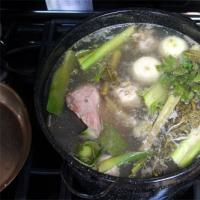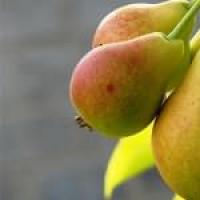Famous Ossetians. Start in science. Alanian philosophers of antiquity
In December 2008, the North Ossetian information portal “15th REGION” summed up the results of the “Our Heritage” project, which had the goal of identifying the most famous Ossetian. The founder of Ossetian writing and writers Kosta Khetagurov received the largest number of votes, for whom 908 people voted. The chief conductor of the Mariinsky Theater, maestro Valery Gergiev, received 824 votes. In third place is the legendary intelligence officer, Hero of the Soviet Union, Colonel General Khadzhumar Mamsurov, who received 541 votes. The “Our Heritage” project was carried out by analogy with those that were carried out in many European countries, including Russia (“Name of Russia”).
The life path of Kosta (Konstantin) Levanovich Khetagurov - the founder of Ossetian literature and language, educator, poet, playwright, publicist, sculptor, artist, public figure - is difficult and tragic. His personal life consisted of hardships, hardships, and constant moving. The authorities sent the restless poet “inside Russia” more than once. But the folk singer, as Costa liked to call himself, always considered man a sacred being, and violence against a person as criminal and disgusting.
In Soviet times, Khetagurov was considered an atheist and almost a Bolshevik. In fact, Costa was a true Christian, a deeply religious man, proud that his Ossetian people had taken the path of Orthodoxy even before the Baptism of Rus'. Costa painted pictures on religious themes and painted temples in the mountains of Ossetia.
...Kosta Khetagurov was born on October 15, 1859 in the family of ensign of the Russian Army Levan Elizbarovich Khetagurov in the very heart of Ossetia - the Nara Basin, where Ossetians live at the break of the Caucasus ridge, on its southern and northern slopes.
Kosta's mother, Maria Gavrilovna Gubaeva, died shortly after his birth, entrusting his upbringing to her relative Chendze Khetagurova (Plieva). Levan Khetagurov married for the second time when Kosta was about five years old. Costa later said about his stepmother that she “didn’t love him. In early childhood, I ran away from her to various relatives.”
Khetagurov studied at the Nara school, then, having moved to Vladikavkaz, to the gymnasium. In 1870, Levan Khetagurov, at the head of the landless Ossetians of the Nara Gorge, moved to the Kuban region. He founded the village of Georgievsko-Osetinskoye (now Kosta-Khetagurovo) there. Missing his father, Kosta dropped out of school and ran away to him from Vladikavkaz. His father had difficulty getting him into the Kalandzhinsky elementary village school.
From 1871 to 1881 Khetagurov studied at the Stavropol provincial gymnasium. From this time, only two of his poems have survived in the Ossetian language (“Husband and Wife” and “New Year”) and the poem “Vera” in Russian.
In August 1881, Khetagurov was admitted to the St. Petersburg Academy of Arts, receiving one of two scholarships paid by the administration of the Kuban region. It was not possible to graduate from Costa Academy: in January 1884, the scholarship was stopped. Costa attended classes at the academy as a volunteer for two more years, but in the summer of 1885 he was forced to return to his father’s house without completing the full course of study.
Until 1891 he lived in Vladikavkaz, where a significant part of his poems were written in Ossetian. Since 1888, he has published his poems in the Stavropol newspaper “North Caucasus”.
In June 1891, he was expelled from Ossetia for his freedom-loving poems. Two years later he moved to Stavropol. In 1895, the newspaper “Northern Caucasus” published a collection of Khetagurov’s works written in Russian.
Soon Costa falls ill with tuberculosis and undergoes two operations.
By this time, Costa was already well known throughout the Caucasus. He dedicated one of his best poems to the great Russian poet Mikhail Yuryevich Lermontov.
At the opening of the monument to M.Yu. Kosta Khetagurov laid a wreath on the pedestal for Lermontov in Pyatigorsk in 1899 from the Caucasian youth.
Pursued by the authorities, the ward Costa came to Pyatigorsk in 1898 after undergoing surgery to be treated with mud baths and stayed here for several months. He immediately becomes involved in the public life of the city. Actively cooperates with the local press. From here he sends articles to St. Petersburg. And, of course, the naturally sociable and open-minded Costa immediately made numerous friends among the Pyatigorsk intelligentsia.
On May 29, 1899, the poet arrived at the place of his new exile in Kherson. In December 1899, Costa received a telegram canceling his exile, but was able to leave only in March 1900. First he settled in Pyatigorsk, then moved to Stavropol to resume work at the North Caucasus newspaper.
In 1899, when Khetagurov was still in exile, a collection of his Ossetian poems, “Ossetian Lyre,” was published in Vladikavkaz. Many poems were changed by censorship, while others were not included in the book.
The poem “Mother of Orphans” from this collection, perhaps more expressively than all his works, shows the poverty and deprivation of the people. Kosta describes one evening in the life of a mountain widow with many children from his native village of Nar. A woman lights a fire, and around her are her five children, barefoot and hungry. The mother consoles them that the beans will be ready soon and everyone will have plenty. Exhausted children fall asleep. The mother cries, knowing that they will all die. The end of the poem is shocking:
She told the children:
“The beans are about to boil!”
And I cooked it myself
Stones for the guys.
In 1901, Khetagurov again became seriously ill. Illness prevented him from finishing the poems “The Weeping Rock” and “Khetag”. In the autumn of the same year, the poet moved to Vladikavkaz, where illness finally confined him to bed.
And again - Pyatigorsk, which the Ossetian poet loved especially dearly, dreamed of buying a modest house here. Costa last visited the city on July 3, 1903, shortly before his death. His sister Olga brought him, absolutely sick, to show him to Kharkov University professor A.Ya. Anfimov. The doctor found the poet's condition hopeless.
In 1905, Kosta was transported by his sister Olga to the village of Georgievsko-Ossetinskoye, where he died on April 1 (March 19), 1906. Later, the poet was reburied in North Ossetia-Alania. Now Kosta Khetagurov rests on the territory of the Ossetian Church in Vladikavkaz. The Kosta Khetagurov House Museum operates here, and in front of the Ossetian Drama Theater there is a monument to the poet. The longest street in the city, Costa Avenue, is named after him.
The largest university in the Republic of North Ossetia - North Ossetian State University named after K. L. Khetagurov (founded in 1920) bears the name of the poet.
Kosta Khetagurov today is a symbol of South Ossetia’s struggle for freedom and independence, a symbol of the unity of the entire Ossetian people, divided by borders.
During the August war of last year in South Ossetia, the following fiery lines were on the lips of many:
I didn't know happiness
But I'm ready for freedom
Which I'm used to
How to cherish happiness /
Give one step at a time
Which people/
I could ever/
To pave the way to freedom.
Chairman of the Union of Writers of South Ossetia Meliton Kaziev called Kosta Khetagurov “God’s gift to the Ossetian people.”
According to him, “Costa raised the Ossetian language and literature to previously unattainable heights. The whole world knows Costa's poetry, Costa's creativity. After him, after it became clear that the Ossetian people were rich in talents, the extermination of the best sons of Ossetia began and this continues to this day.”
The revival of heroic Tskhinvali is just beginning. During the recent tour of the South Ossetian State Drama Theater named after Kosta Khetagurov to the Tambov region, the play “Julius Caesar” based on the tragedy of the same name by William Shakespeare in the Ossetian language was played by nine actors. Their speech was translated into Russian by the artistic director of the theater, Minister of Culture of the independent state Tamerlan Dzudtsov.
The minister said that the building of their theater was destroyed by shells from Georgian tanks and thanked the Tambov builders who built an entire street in Tskhinval, called Tambovskaya, for free.
In the future, Ossetian artists intend to stage a play about love based on Kosta Khetagurov’s play “Fatima” at the educational theater of Tambov University.
The competition for the best design for the anniversary Year's emblem recently ended.
The comprehensive plan of events to celebrate the 150th anniversary of Kosta Khetagurov includes holding philological, art history, ethnographic conferences, publishing the works of the poet himself, special photo albums, scientific, methodological and children's literature.
On the anniversary days, exhibitions and special displays will be launched in museums, libraries and schools. Professional artists and students from children's art schools will take part in them. In addition, concert programs, reading debates, and meetings of writers with school and university students will be organized.
Theater groups will perform performances based on plays by Kosta Khetagurov. Numerous competitions, literary, musical and folklore festivals, and screenings of films based on Costa's works will be held.
In September, at the M. Tuganov Art Museum in Vladikavkaz - here is the largest collection of paintings by the great Ossetian educator in the Russian Federation - an exhibition of artistic works by Kosta Khetagurov will be opened.
The museum has 18 of his paintings and graphic works. Among them is the genre artistic composition “On the School Bench of Life,” as well as a gallery of portraits of his contemporaries written by him.
According to the director of the museum, Alla Dzhanaeva, the funds also contain icons painted by Kosta Khetagurov - “The Mourning Angel”, the biblical story “Prayer for the Cup”, another icon “The Savior Not Made by Hands”, which was previously stored in the museum in Tskhinvali, is today in the Regional History Department Museum of Vladikavkaz.
Anniversary events will be held not only in North and South Ossetia, but also in Stavropol, Pyatigorsk, Karachay-Cherkessia, St. Petersburg...
In October 2009, the Days of Ossetia will be held in Moscow, dedicated to the 150th anniversary of the birth of Kosta Khetagurov. As part of them, a gala concert “Together with Russia, united and strong” will take place.
“The anniversary of Kosta Khetagurov, whose name is known throughout Russia, also has great patriotic significance,” emphasized the head of the Republic of North Ossetia-Alania, Taimuraz Mamsurov. “We need to breathe life into the current climate of routine and anxiety, and do everything to give people optimism in life.” The celebration of this important historical event should be such an incentive.”
...The poems and poems of Kosta Khetagurov, who loved to repeat “... I write what I can no longer contain in my aching heart,” have been translated into almost all the languages of the former Soviet Union, into dozens of languages of the world. Many of them became catchphrases.
Thus, far beyond the borders of Kosta Khetagurov’s homeland, the following lines are known:
The whole world is my temple,
Love is my sanctuary
Abaev, Boris Georgievich (b. 1931) - Honored coach of Russia in freestyle wrestling
Vasily Ivanovich Abaev (1900-2001) - an outstanding Soviet and Russian philologist, Iranian linguist, local historian, etymologist and teacher, professor...
Adyrkhaeva, Svetlana Dzantemirovna (b. 1938) - Soviet ballerina, prima of the Bolshoi Theater. People's Artist of the USSR.
Andiev, Soslan Petrovich - two-time Olympic champion and four-time world champion in freestyle wrestling (1976 and 1980)
Britaeva Zarifa Elbyzdykoevna (1919 – 2001) - director, Honored Artist of the Russian Federation and North Ossetia, People's Artist of the RSFSR
Butaev, Konstantin Nikolaevich - theater and film actor, film director, stuntman.
Davydov, Lado Shirinshaevich - intelligence officer, Hero of the Soviet Union
Dzhanaev, Soslan Totrazovich - Russian football player
Dzasokhov, Alexander Sergeevich - Russian politician, president of North Ossetia-Alania in 1998-2005
Dzgoev, Taimuraz Aslanbekovich - Soviet freestyle wrestler, two-time world champion
Ilia II (Catholicos – Patriarch of All Georgia) (born 1933)
Isaev, Magomet Izmailovich - linguist
Lisitsian, Pavel Gerasimovich (1911-2004) - opera singer, People's Artist of the USSR (1956)
Kabaidze, Vladimir Pavlovich (1924-1998) - Hero of Socialist Labor, laureate of the USSR State Prize
Karaev, Vitaly Sergeevich - Russian politician
Karaev, Ruslan Savelievich - Russian kickboxer
Kasaev, Alan Taimurazovich - Russian football player
Kovda, Viktor Abramovich - outstanding Soviet soil scientist, corresponding member of the USSR Academy of Sciences
Kotsoev, Arsen Borisovich (1872-1944) - Ossetian writer
Mazurenko, Sergey Nikolaevich (born 1949) - ex-head of the Federal Agency for Science and Innovation, Deputy Minister of Education of the Russian Federation
Mamsurov, Taimuraz Dzambekovich - Russian politician, head of the Republic of North Ossetia-Alania since 2005 (born in Beslan)
Mamsurov, Hadji-Umar Dzhiorovich - intelligence colonel general, Hero of the Soviet Union, founder of the GRU special forces
Maria Amelie (Madina Salamova) - Norwegian writer, native of North Ossetia
Marzoev, Arkady Inalovich - Doctor of Biological Sciences, Professor of SOGU named after. K. L. Khetagurova, specialist in the field of Food Production Technology, author of numerous recipes for balms, alcoholic beverages and beer drinks
Musulbes, David Vladimirovich - Olympic champion and two-time world champion in freestyle wrestling (2000)
Petrov, Denis Vladimirovich - singer, band member Chelsea
Pliev, Issa Aleksandrovich - army general, twice hero of the Soviet Union, hero of the Mongolian People's Republic
Rojo Yukio (Boradzov Soslan Feliksovich) - sumo wrestler
Salamov, Nikolai Mikhailovich (1922-2003) - actor, director. People's Artist of the USSR (1984)
Svyatopolk-Mirsky, Pyotr Dmitrievich - Russian statesman
Smirsky, Alexander Alexandrovich - designer of sporting weapons
Solmi Sergey is a Russian artist, photographer, one of the most famous representatives of the hippie movement in Russia.
Sokhiev, Tugan Taimurazovich - Russian conductor
Taymazov, Artur Borisovich - Uzbek wrestler, two-time Olympic champion
Ter-Grigoryan, Nodar Grigorievich - Armenian political and military figure
Thapsaev, Vladimir Vasilievich (1910-1981) - an outstanding Soviet theater and film actor, People's Artist of the USSR.
Torchinov, Evgeniy Alekseevich - religious scholar
Fadzaev, Arsen Suleymanovich - two-time Olympic champion and six-time world champion in freestyle wrestling (1988 and 1992)
Farniev, Irbek Valentinovich - Russian wrestler, world champion
Hakurozan Yuta (Batraz Feliksovich Boradzov) - sumo wrestler
Khetagurov, Kosta Levanovich - poet, educator, sculptor, artist
Tsarukaeva, Svetlana Kaspolatovna - Russian weightlifter, world champion
Chervinsky, Anton Karlovich - priest (lived and died for a long time in Vladikavkaz)
Shabalkin, Nikita Alekseevich - Russian basketball player
Living in the territory of Southern and. However, it can be found in Russia and other countries of the world. There are approximately 700 thousand Ossetians living all over the world, of which 515 thousand people have a Russian passport.
Residents of North Ossetia speak mainly Russian, because... The state is part of Russia. As for religion, the majority of people here are, but there are also representatives of other religions. Ossetians belong to the Caucasian type of the Caucasian race. These people are characterized by an elongated head shape, brown, blue or gray eyes, as well as black hair, although there are also fair-haired and red-haired representatives.
The population of the republic is approximately 712 thousand people; in addition to Ossetians, the following people live in the country:
165,0 (23,0 %);
Ingush - 25.0 (5.0%);
17,0 (2,5 %);
Kumyks - 13.0 (2.0%);
10,5 (1,5 %);
5.5 (less than 1%);
3.5 (less than 1%);
Adygs (Kabardians) 2.8 (less than 1%);
Turks 2.8 (less than 1%).
Speaking about Ossetian architecture, it must be said that the greatest interest is caused by monuments such as fortresses, castles, towers, and barrier walls. Such structures were usually built in gorges inhabited by people. Since ancient times, such buildings have been a reliable guarantor of freedom of childbirth, as well as a refuge for their owners. Few architectural monuments have survived to this day; most of them were destroyed during hostilities.
The main dishes of Ossetians are pies, stews of meat and potatoes, meat stewed with sour cream, sauce made from pepper leaves with cream, boiled corn and beans. Traditional drinks include kvass, beer, and a drink called araka, which is similar to whiskey. Of course, like in any other Caucasian country, in North Ossetia they know and love to cook shish kebab.
Since ancient times, the main occupation of local residents has been agriculture and cattle breeding; at one time, local residents were also involved in hunting. The most popular activities on the farm were the preparation of butter and cheese, the production of cloth, wool processing, and the manufacture of utensils from wood and metal. The Ossetian costume looked something like this: a beshmet and tight trousers reaching to the shoes. In the mountains they used special shoes - archit, and the headdress was a fur hat, in summer - a mountain hat.
As for women, in everyday life they dressed in dresses that had a stand-up collar and pleats at the waist, and a slit on the chest to the waist.
Ossetian fine and applied art is very rich.
The local people were engaged in wood carving, metal processing, ornament embroidery, even stone carving. If we talk about musical instruments, they are very similar to typical Caucasian instruments.
Among them one can highlight a harp, a shepherd's pipe, a two-string violin, all of these instruments were played only by men. A little later, a double-row accordion appeared in North Ossetia, which was imported from Russia.
Ossetians are a tolerant, hospitable and friendly nation.
Famous Ossetians:
Valery Georgievich Gazzaev (b. 1954) - football coach, “Master of Sports of International Class”, “Honored Coach of Russia”.
Valery Abisalovich Gergiev (b. 1953) - People's Artist of Russia, artistic director of the Mariinsky Theater, chief conductor of the London Symphony Orchestra.
Varziev Khadzhismel Petrovich (1938-2011) - the first certified choreographer of Ossetia, Honored Artist, People's Artist of the SOASSR.
Gizikova, Zarina Mayramovna - Russian gymnast, Honored Master of Sports in rhythmic gymnastics, European champion in the team (2002), world champion in the ball exercise (2003)
Dzagoev Alan Elizbarovich (b. 1990) - Russian football player, young player in the
Shanaeva Aida Vladimirovna (b. 1986) - Russian athlete - foil fencer, Honored Master of Sports, Olympic champion in the team (2008), world champion (2009)
Khetagurov, Kosta Levanovich (1859-1906) - poet
Gatsalov Khadzhimurat Soltanovich (b. 1982) - Olympic champion, multiple world champion, master of freestyle wrestling.
In December 2008, the North Ossetian information portal “15th REGION” summed up the results of the “Our Heritage” project, which had the goal of identifying the most famous Ossetian. The founder of Ossetian writing and writers Kosta Khetagurov received the largest number of votes, for whom 908 people voted. The chief conductor of the Mariinsky Theater, maestro Valery Gergiev, received 824 votes. In third place is the legendary intelligence officer, Hero of the Soviet Union, Colonel General Khadzhumar Mamsurov, who received 541 votes. The “Our Heritage” project was carried out by analogy with those that were carried out in many European countries, including Russia (“Name of Russia”).
The life path of Kosta (Konstantin) Levanovich Khetagurov - the founder of Ossetian literature and language, educator, poet, playwright, publicist, sculptor, artist, public figure - is difficult and tragic. His personal life consisted of hardships, hardships, and constant moving. The authorities sent the restless poet “inside Russia” more than once. But the folk singer, as Costa liked to call himself, always considered man a sacred being, and violence against a person as criminal and disgusting.
In Soviet times, Khetagurov was considered an atheist and almost a Bolshevik. In fact, Costa was a true Christian, a deeply religious man, proud that his Ossetian people had taken the path of Orthodoxy even before the Baptism of Rus'. Costa painted pictures on religious themes and painted temples in the mountains of Ossetia.
...Kosta Khetagurov was born on October 15, 1859 in the family of ensign of the Russian Army Levan Elizbarovich Khetagurov in the very heart of Ossetia - the Nara Basin, where Ossetians live at the break of the Caucasus ridge, on its southern and northern slopes.
Kosta's mother, Maria Gavrilovna Gubaeva, died shortly after his birth, entrusting his upbringing to her relative Chendze Khetagurova (Plieva). Levan Khetagurov married for the second time when Kosta was about five years old. Costa later said about his stepmother that she “didn’t love him. In early childhood, I ran away from her to various relatives.”
Khetagurov studied at the Nara school, then, having moved to Vladikavkaz, to the gymnasium. In 1870, Levan Khetagurov, at the head of the landless Ossetians of the Nara Gorge, moved to the Kuban region. He founded the village of Georgievsko-Osetinskoye (now Kosta-Khetagurovo) there. Missing his father, Kosta dropped out of school and ran away to him from Vladikavkaz. His father had difficulty getting him into the Kalandzhinsky elementary village school.
From 1871 to 1881 Khetagurov studied at the Stavropol provincial gymnasium. From this time, only two of his poems have survived in the Ossetian language (“Husband and Wife” and “New Year”) and the poem “Vera” in Russian.
In August 1881, Khetagurov was admitted to the St. Petersburg Academy of Arts, receiving one of two scholarships paid by the administration of the Kuban region. It was not possible to graduate from Costa Academy: in January 1884, the scholarship was stopped. Costa attended classes at the academy as a volunteer for two more years, but in the summer of 1885 he was forced to return to his father’s house without completing the full course of study.
Until 1891 he lived in Vladikavkaz, where a significant part of his poems were written in Ossetian. Since 1888, he has published his poems in the Stavropol newspaper “North Caucasus”.
In June 1891, he was expelled from Ossetia for his freedom-loving poems. Two years later he moved to Stavropol. In 1895, the newspaper “Northern Caucasus” published a collection of Khetagurov’s works written in Russian.
Soon Costa falls ill with tuberculosis and undergoes two operations.
By this time, Costa was already well known throughout the Caucasus. He dedicated one of his best poems to the great Russian poet Mikhail Yuryevich Lermontov.
At the opening of the monument to M.Yu. Kosta Khetagurov laid a wreath on the pedestal for Lermontov in Pyatigorsk in 1899 from the Caucasian youth.
Pursued by the authorities, the ward Costa came to Pyatigorsk in 1898 after undergoing surgery to be treated with mud baths and stayed here for several months. He immediately becomes involved in the public life of the city. Actively cooperates with the local press. From here he sends articles to St. Petersburg. And, of course, the naturally sociable and open-minded Costa immediately made numerous friends among the Pyatigorsk intelligentsia.
On May 29, 1899, the poet arrived at the place of his new exile in Kherson. In December 1899, Costa received a telegram canceling his exile, but was able to leave only in March 1900. First he settled in Pyatigorsk, then moved to Stavropol to resume work at the North Caucasus newspaper.
In 1899, when Khetagurov was still in exile, a collection of his Ossetian poems, “Ossetian Lyre,” was published in Vladikavkaz. Many poems were changed by censorship, while others were not included in the book.
The poem “Mother of Orphans” from this collection, perhaps more expressively than all his works, shows the poverty and deprivation of the people. Kosta describes one evening in the life of a mountain widow with many children from his native village of Nar. A woman lights a fire, and around her are her five children, barefoot and hungry. The mother consoles them that the beans will be ready soon and everyone will have plenty. Exhausted children fall asleep. The mother cries, knowing that they will all die. The end of the poem is shocking:
She told the children:
“The beans are about to boil!”
And I cooked it myself
Stones for the guys.
In 1901, Khetagurov again became seriously ill. Illness prevented him from finishing the poems “The Weeping Rock” and “Khetag”. In the autumn of the same year, the poet moved to Vladikavkaz, where illness finally confined him to bed.
And again, Pyatigorsk, which the Ossetian poet loved especially dearly, dreamed of buying a modest house here. Costa last visited the city on July 3, 1903, shortly before his death. His sister Olga brought him, absolutely sick, to show him to Kharkov University professor A.Ya. Anfimov. The doctor found the poet's condition hopeless.
In 1905, Kosta was transported by his sister Olga to the village of Georgievsko-Ossetinskoye, where he died on April 1 (March 19), 1906. Later, the poet was reburied in North Ossetia-Alania. Now Kosta Khetagurov rests on the territory of the Ossetian Church in Vladikavkaz. The Kosta Khetagurov House Museum operates here, and in front of the Ossetian Drama Theater there is a monument to the poet. The longest street in the city, Costa Avenue, is named after him.
The largest university in the Republic of North Ossetia - North Ossetian State University named after K. L. Khetagurov (founded in 1920) bears the name of the poet.
Kosta Khetagurov today is a symbol of South Ossetia’s struggle for freedom and independence, a symbol of the unity of the entire Ossetian people, divided by borders.
During the August war of last year in South Ossetia, the following fiery lines were on the lips of many:
I didn't know happiness
But I'm ready for freedom
Which I'm used to
How to cherish happiness /
Give one step at a time
Which people/
I could ever/
To pave the way to freedom.
Chairman of the Union of Writers of South Ossetia Meliton Kaziev called Kosta Khetagurov “God’s gift to the Ossetian people.”
According to him, “Costa raised the Ossetian language and literature to previously unattainable heights. The whole world knows Costa's poetry, Costa's creativity. After him, after it became clear that the Ossetian people were rich in talents, the extermination of the best sons of Ossetia began and this continues to this day.”
The revival of heroic Tskhinvali is just beginning. During the recent tour of the South Ossetian State Drama Theater named after Kosta Khetagurov to the Tambov region, the play “Julius Caesar” based on the tragedy of the same name by William Shakespeare in the Ossetian language was played by nine actors. Their speech was translated into Russian by the artistic director of the theater, Minister of Culture of the independent state Tamerlan Dzudtsov.
The minister said that the building of their theater was destroyed by shells from Georgian tanks and thanked the Tambov builders who built an entire street in Tskhinval, called Tambovskaya, for free.
In the future, Ossetian artists intend to stage a play about love based on Kosta Khetagurov’s play “Fatima” at the educational theater of Tambov University.
The competition for the best design for the anniversary Year's emblem recently ended.
The comprehensive plan of events to celebrate the 150th anniversary of Kosta Khetagurov includes holding philological, art history, ethnographic conferences, publishing the works of the poet himself, special photo albums, scientific, methodological and children's literature.
On the anniversary days, exhibitions and special displays will be launched in museums, libraries and schools. Professional artists and students from children's art schools will take part in them. In addition, concert programs, reading debates, and meetings of writers with school and university students will be organized.
Theater groups will perform performances based on plays by Kosta Khetagurov. Numerous competitions, literary, musical and folklore festivals, and screenings of films based on Costa's works will be held.
In September, at the M. Tuganov Art Museum in Vladikavkaz - here is the largest collection of paintings by the great Ossetian educator in the Russian Federation - an exhibition of artistic works by Kosta Khetagurov will be opened.
The museum has 18 of his paintings and graphic works. Among them is the genre artistic composition “On the School Bench of Life,” as well as a gallery of portraits of his contemporaries written by him.
According to the director of the museum, Alla Dzhanaeva, the funds also contain icons painted by Kosta Khetagurov - “The Mourning Angel”, the biblical story “Prayer for the Cup”, another icon “The Savior Not Made by Hands”, which was previously stored in the museum in Tskhinvali, is today in the Regional History Department Museum of Vladikavkaz.
Anniversary events will be held not only in North and South Ossetia, but also in Stavropol, Pyatigorsk, Karachay-Cherkessia, St. Petersburg...
In October 2009, the Days of Ossetia will be held in Moscow, dedicated to the 150th anniversary of the birth of Kosta Khetagurov. As part of them, a gala concert “Together with Russia, united and strong” will take place.
“The anniversary of Kosta Khetagurov, whose name is known throughout Russia, also has great patriotic significance,” emphasized the head of the Republic of North Ossetia-Alania, Taimuraz Mamsurov. “We need to breathe life into the current climate of routine and anxiety, and do everything to give people optimism in life.” The celebration of this important historical event should be such an incentive.”
...The poems and poems of Kosta Khetagurov, who loved to repeat “... I write what I can no longer contain in my aching heart,” have been translated into almost all the languages of the former Soviet Union, into dozens of languages of the world. Many of them became catchphrases.
Thus, far beyond the borders of Kosta Khetagurov’s homeland, the following lines are known:
The whole world is my temple,
Love is my sanctuary
The universe is my fatherland.
Ossetians, Ossetians are the descendants of the ancient Alans, Sarmatians and Scythians. However, according to a number of well-known historians, the presence of the so-called local Caucasian substrate in the Ossetians is also obvious. Currently, Ossetians mostly inhabit the northern and southern slopes of the central part of the main Caucasus ridge. Geographically, they form the Republic of North Ossetia - Alania (area - about 8 thousand sq. km., capital - Vladikavkaz) and the Republic of South Ossetia (area - 3.4 thousand sq. km., capital - Tskhinvali).
Despite the geographical and administrative division, a single people lives in both parts of Ossetia, with the same culture and language. The division occurred by a strong-willed decision from the Kremlin in 1922, without any consideration of the opinions of the Ossetians themselves. According to this decision, North Ossetia was assigned to Russia, and South Ossetia to Georgia. For seven decades, if you do not take into account the feelings of the poor stepdaughter and attempts to impose Georgian culture and language, the citizens of South Ossetia did not experience any great inconvenience from this division, since they lived in a single family of fraternal peoples of the USSR. But times have changed. Russia and Georgia have become separate states with very strained relations. At the same time, the Ossetians found themselves on opposite sides of the state border. Moreover, even many families whose members live in different parts of Ossetia became divided. But more on that below. Currently, the total number of Ossetians in the world is about 640-690 thousand people. Of these (according to unofficial data) live: -in North Ossetia - 420-440 thousand people
In South Ossetia - 70 thousand people
In the republics and regions of Russia - 60-80 thousand people
In Georgia – 50-60 thousand people
In states on the territory of the former USSR - 20-30 thousand people,
In Turkey and Syria – 11-12 thousand people,
In the countries of Europe, America, Australia - about 12-15 thousand people.
Ossetia borders: in the east - with the Republic of Ingushetia, in the northeast - with Chechnya, in the west and northwest - with the Kabardino-Balkarian Republic, in the south - with Georgia and in the north - with the Stavropol Territory. The nature of Ossetia is rich and varied: sultry steppes, flowering foothill plains, eternally ice-covered peaks of the highest Caucasus Mountains in Europe, deep gorges and swift rivers. Ossetians are a people who, due to their uniqueness (the absence of related peoples close in language and culture), have long attracted the close attention of Russian and famous foreign historians and researchers of the Caucasus, such as Miller, Sjögren, Klaproth, Vernardsky, Dumezil, Bakhrakh, Sulimirsky, Littleton, Bailey, Cardini, Abaev, Rostovtsev, Kuznetsov and many others. The history of Ossetia from the Alans, Sarmatians and Scythians to the present day is quite well described in the books of many authoritative scientists, and in particular M. Bliev and R. Bazrov “History of Ossetia”, as well as in the preface given in this section by academician M. Isaev “Alans . Who are they?" to the Russian edition of Bernard S. Bachrach’s book “Alans in the West”. This book itself (“A history of the Alans in the West”, by Bernard S. Bachrach)* vividly illuminates the history of the Western Alans, who settled in large numbers in the countries of Western and Central Europe, and left a noticeable mark on the development of the culture of the peoples of these countries, from the British Isles and northern Italy to the Balkan countries and Hungary. There, the descendants of the Alans (Ass) subsequently formed a separate Iasi region, preserving the culture and language of their ancestors for many centuries. By the way, most studies of the history of Western Alans completely refutes the theories of some North Caucasian historians that the Alans were not Iranian-speaking. The Iranian-speaking nature of Western Alans is recognized without much effort. Throughout its history, the Ossetian people went through periods from rapid prosperity, increased power and enormous influence in the first millennium AD, to almost complete catastrophic extermination during the invasions of the Tatars - the Mongols and the lame Timur in the 13-14 centuries. The comprehensive catastrophe that befell Alanya led to the mass destruction of the population, the undermining of the foundations of the economy, and the collapse of statehood. The pitiful remnants of a once powerful people (according to some sources, no more than 10-12 thousand people) were locked in the high-mountain gorges of the Caucasus Mountains for almost five centuries. During this time, all “external relations” of the Ossetians were limited only to contacts with their closest neighbors. However, every cloud has a silver lining. According to scientists, largely thanks to this isolation, the Ossetians have preserved their unique culture, language, traditions and religion almost in their original form. Centuries passed and the people rose from the ashes and grew noticeably in numbers. And by the first half of the 18th century, due to the cramped, harsh and limited conditions of the highlands and the complex geopolitical situation in the region, the Ossetian people faced the urgent question of the need to become part of Russia and resettle to the lowland lands. Through elected ambassadors - representatives of various Ossetian societies, a corresponding petition was sent to St. Petersburg addressed to Empress Elizabeth Petrovna. After the defeat of Turkey in the Russian-Turkish war of 1768-1774. Russia's influence in the region increased noticeably and it was able to act more decisively than before in pursuing its colonial goals in the Caucasus. And following the conclusion of the Kuchuk-Kainardzhi Peace Treaty in 1974, a decision was made to annex Ossetia to the Russian Empire. However, the administrative subordination of Ossetia was initially of a formal nature. And the people continued to maintain independence from the Russian administration for a long time. In the Ossetian gorges, uprisings like Digorsky in 1781, which were of a people's liberation nature, broke out every now and then. However, in general, joining Russia corresponded to the national interests of Ossetia. It brought closer the solution to such important issues as resettlement to the foothill plains, ensuring external security and the establishment of trade relations in Russia. Over the next 100-150 years, hundreds of educated teachers, educators, writers, military leaders, statesmen and public figures grew up in Ossetia. Most of them received a good education in St. Petersburg, Moscow and other large cities of Russia. By the beginning of the last century, there were already dozens of Ossetian military generals and thousands of officers awarded the highest military awards in Russia. Faithfully and truly, with Alanian honor, they defended the interests of the Fatherland throughout, from the Far East to the Balkans and Turkey. Years passed and the political events of the beginning of the 20th century dealt a new blow to our people, like all other peoples of the country. The revolution of 1917 and the subsequent Civil War split Ossetian society into warring irreconcilable camps for a long time. They significantly undermined the foundations of intra-social relationships, foundations and traditions. Often neighbors, relatives, or even members of the same family found themselves on opposite sides of the barricades. Many leading people of their time were killed in battle, others emigrated abroad forever. Well, the greatest damage to Ossetian culture was caused during the famous repressions of the 30s and 40s, when the color of the nation was almost completely destroyed. The famous Alan military art and desire for military feats did not go down in history along with them. Through the centuries they were reborn in descendants, for whom military service and defense of the Fatherland have always been held in special esteem. The desire for officer service is evident in Ossetians from early childhood. And the fact that this project included information about 79 generals and admirals of the Soviet period and modern Russia convincingly confirms this conclusion. The Ossetian people most clearly showed their best qualities, inherited from their proud ancestors, during the Second World War.
With a total population of 340 thousand people in 1941:
90 thousand Ossetians left to defend their homeland from the fascist occupiers.
46 thousand of them died in battles for the freedom and independence of our Motherland.
34 Ossetians became Heroes of the Soviet Union. This is the highest figure in relation to the total population among all the peoples of the USSR (see table in the “Heroes of the Soviet Union” section). -more than 50 people became generals and admirals
The Ossetian family of the Gazdanovs lost all 7 sons on the war fronts,
Two families lost 6 sons each,
In 16 families, 5 sons did not return from the war,
52 Ossetian families lost 4 sons in this war,
The defeat of the fascist troops in the Caucasus began with their defeat in fierce battles on the outskirts of Vladikavkaz in the winter of 1942, and the liberation of the Nazi-occupied areas of North Ossetia. Dozens of Ossetian military generals fought bravely in the ranks of the Red Army commanders. The most famous of them are twice Hero of the Soviet Union, Army General Issa Pliev, Hero of the Soviet Union, Army General Georgy Khetagurov, Hero of the Soviet Union, Colonel General, one of the most prominent Soviet intelligence officers, who was called the father of Soviet special forces, Hadji-Umar Mamsurov and commander famous Soviet air aces, Hero of the Soviet Union, Major General Ibragim Dzusov. The post-war period in the history of Ossetia is characterized by rapid development of industry, economics, agriculture, culture and sports. Thanks to its rich natural resources, such large enterprises of the mining and processing industry have grown in Ossetia as the Sadonsky and Kvaisinsky lead-zinc plants, the Electrozinc and Pobedit plants, the products of which were widely used in the country and abroad, and the Tskhinvali Emalprovod plants. and “Vibromashina”, the Alagir Resistance Plant, the largest Beslan maize mill in Europe, the furniture company “Kazbek”, a number of large electronics enterprises, etc. The capital of the Republic of North Ossetia is Alania, Vladikavkaz (population - just over 300 thousand people) - one of the most beautiful cities in the region, a cultural, economic and transport center. Here, as throughout the republic, people of many nationalities live in peace and harmony. Vladikavkaz is famous for its prestigious higher educational institutions, including North Ossetian State University named after K.L. Khetagurova, Mountain State Agrarian University, North Caucasus State Technological University, North Ossetian State Medical Academy, higher military schools and others. The cultural life of Ossetia is diverse and rich. There are several state theaters, a philharmonic society, the state academic folk dance ensemble “Alan”, famous in the country and abroad, and the equestrian theater “Narty”. Ossetian culture and art have given the country and the world such famous people as one of the best conductors in the world, head of the St. Petersburg Mariinsky Theater Valery Gergiev, the world's first female conductor, People's Artist of the USSR Veronika Dudarova, soloist of the Bolshoi Theater ballet, People's Artist of the USSR Svetlana Adyrkhaeva, the Kantemirov dynasty of circus artists led by the founder of the Soviet equestrian circus art Alibek Kantemirov, theater and film artists, People's Artists of the USSR Vladimir Thapsaev and Nikolai Salamov, famous pop performers Felix Tsarikati and Akim Salbiev and many others. At competitions of the highest rank, Ossetian athletes glorify their Motherland in freestyle and Greco-Roman wrestling, judo, karate, Tae Kwon Do, weightlifting, arm wrestling, football, rhythmic gymnastics and many other sports. Ossetians are rightfully proud of 12 Olympic Games champions, several dozen world, European, USSR and post-Soviet Russia champions.
 How to cook corn porridge in water according to a step-by-step recipe with photos
How to cook corn porridge in water according to a step-by-step recipe with photos The most delicious recipes for kefir biscuits
The most delicious recipes for kefir biscuits How to cook the most delicious cabbage - secrets Ukrainian cabbage with sauerkraut
How to cook the most delicious cabbage - secrets Ukrainian cabbage with sauerkraut Fortune telling with playing cards will allow you to find out everything that was hidden
Fortune telling with playing cards will allow you to find out everything that was hidden I dreamed that a bus overturned in a dream
I dreamed that a bus overturned in a dream Seeing large ripe pear fruits in a dream: meaning
Seeing large ripe pear fruits in a dream: meaning Why do you dream about Cooking?
Why do you dream about Cooking?